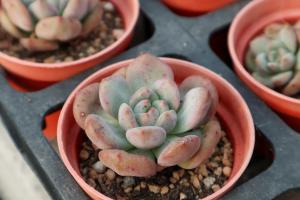Are Any Desert Trees Cam Plants?
Cam plants, also known as Crassulacean acid metabolism (CAM) plants, are plants that have adapted to arid environments by opening their stomata at night to take in carbon dioxide and store it as an acid. This allows them to avoid water loss during the heat of the day. While many succulent plants are cam plants, not all desert trees are. However, some desert trees have adapted to the harsh climate in other ways.
Desert Trees Adaptations
Desert trees have various adaptations that allow them to survive in arid regions. One of these is the ability to deep-root, reaching moisture deep underground. Palo verde and mesquite trees have deep taproots that help them access the water beneath the surface. In addition, desert trees have also developed ways to conserve water, such as shedding their leaves during periods of drought or having small leaves that reduce transpiration rates. Some desert trees even have protective coatings on their leaves to reflect sunlight and prevent leaf burn.
Examples of Desert Trees
One example of a desert tree is the Joshua tree (Yucca brevifolia), which is native to the Mojave Desert in the southwestern United States. The Joshua tree is not a cam plant but has adapted to the harsh desert environment in other ways. They have thick trunks that store water, and long, tough leaves that reduce water loss. The root system of the Joshua tree is also extensive, allowing it to reach water deep underground. Another example of a desert tree is the ironwood tree (Olneya tesota), which is native to the Sonoran Desert. Ironwood trees have small leaves and thick bark, which helps them to conserve water during droughts.
Benefits of Desert Trees
Despite the harsh conditions of their environment, desert trees provide various benefits. They are excellent for shade and serve as homes to various desert species. They also help to prevent soil erosion and contribute to the nutrient cycling of the ecosystem. Many desert trees have also been used in traditional medicine by indigenous people.
Conclusion
While not all desert trees are cam plants, they have developed unique ways to adapt to their harsh environments through deep-rooting, water conservation, and protective mechanisms. Desert trees are important for the ecosystem and provide numerous benefits to both humans and wildlife.

 how many times do yo...
how many times do yo... how many planted tre...
how many planted tre... how many pine trees ...
how many pine trees ... how many pecan trees...
how many pecan trees... how many plants comp...
how many plants comp... how many plants can ...
how many plants can ... how many plants and ...
how many plants and ... how many pepper plan...
how many pepper plan...






























